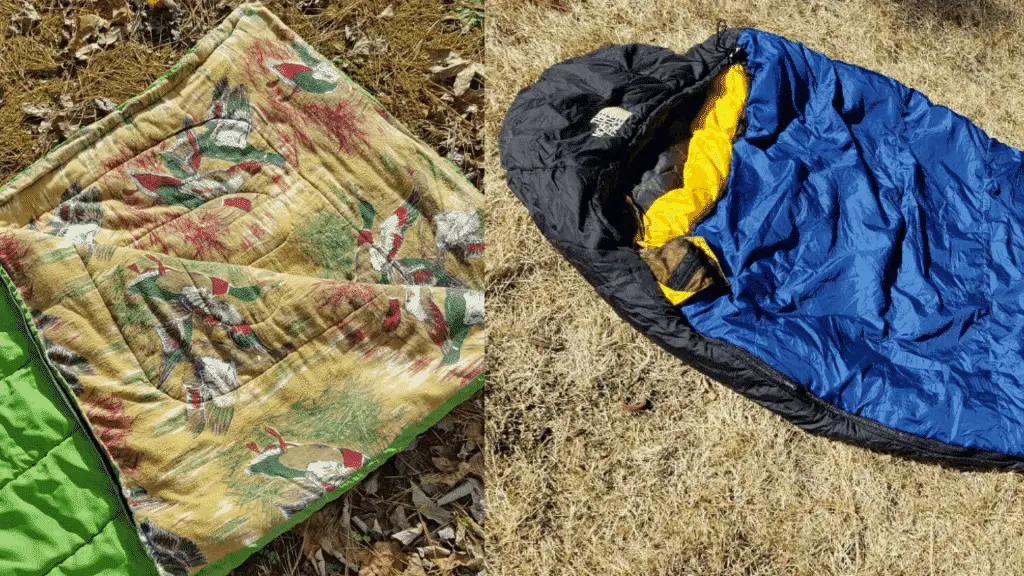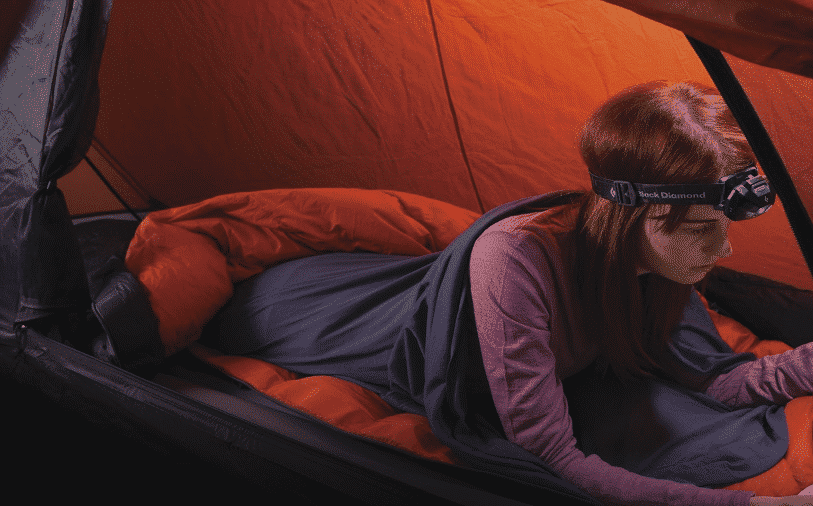If you’re a camper or backpacker you probably have some familiarity with sleeping bag liners. All they are is a thin lightweight cloth sack that lines the inside of your sleeping bag.
Sleeping bag liners keep the inside of your bag clean and add extra warmth (sometimes a lot) to your sleeping bag. It keeps your bag clean and free of body oils, dirt, skin and general debris that could potentially damage your bag. You really don’t need a sleeping bag liner, but it will significantly increase the lifetime of your bag.
Table Of Contents
Why Use a Sleeping Bag Liner?
For backpackers and campers, a traditional mummy-shaped liner is going to help keep your sleeping bag clean and free of dirt, grime and body oils. All you’re trying to do is extend the amount of time between laundry cycles.
Every time you put a sleeping bag in the washing machine the filling will start to compress and lump up. Over time this will have a significant impact on the overall warmth of your sleeping bag. Plus it’s so much easier to wash a liner than a full-sized bag.
1) Bag Liners add Warmth
Bag liners aren’t just about protecting your bag from dirt and grime. Even the cheapest liner will add somewhere between 5° to 15° of extra warmth to your bag.
Although it’s not my favorite liner on the market you really can’t beat Coleman’s Fleece Liner (On Amazon). For the price, I haven’t found anything that comes close to matching its quality and warmth(adds 12°). Sea to Summit makes heavy duty liners that have a wide range of temperature ratings from all the way up to 25°.
Try Using Your Liner Without The Bag
Throughout most of the summer I ditch my sleeping bag altogether and solely use my Sea to Summit Reactor Extreme Liner(On Amazon). It can be used on its own down to about 55° before you start to feel a little chilly. This can really save a lot of weight when traveling through the heat of summer.
Travelers and Hostels
Sleeping bag liners are even more important when traveling through areas with questionable cleanliness. A rectangular bag liner (aka Travel Sheet) is an absolute necessity staying in hotels/hostels with a possible bedbug infestation.
Silk bag liners (my favorite) will protect you from bed bugs when traveling in foreign countries. Just use the bag liner in place of a sheet to protect your self from bed bug bites.
2) Hygiene
You don’t go years between changing your bedsheets so why is it ok to avoid washing your sleeping bag. After a long hike do you really want all that sweat to get into your bag? I definitely Don’t!
A bag liner is going to protect your bag from oil, dirt and sweat by creating a barrier between your body and the sleeping bag. Over time all that sweat starts to accumulate in your bag reducing the effectiveness of your insulation. Plus sleeping in a sweat-covered bag is downright nasty.
3) Significantly Extend The Life of Your Bag
Almost every tear in my sleeping bag happened during the wash process. Even on gentle cycle washing machines wreak havoc on a sleeping bag. Don’t even try washing a bag in a top-loading machine with an agitator you’ll end up with lots of rips.
With a bag liner, you can extend the time between wash cycles protect your expensive sleeping bag. You don’t have to worry about the down/synthetic insulation clumping up and compressing after multiple washes.
4) Protect You Against Insects
Silk and some Polyester bag liners are designed to ward off insects during the night. They are primarily used to fight against bed bugs, but they also work with mosquitos, ticks, ants, fleas, chiggers and midges.
These liners won’t add much warmth to your bag, but you won’t have to worry about bug bites in the middle of the night.
Different Liner Styles

Sleeping bag liners typically come in 2 different styles so make sure you pick the one that matches your bag.
- Mummy Shapes: Mummy shaped liners are designed to fit into the mummy-style sleeping bags. These are the bags that include a hood to wrap around the sides of your head.
- Rectangular Shape:
Different Materials
Before settling on a bag you really need to consider the material that it’s made out of. Personally, I would go with a thermal liner since they offer the most versatility.
- Thermal Liners: (Expensive) Thermal liners add significant warmth to your bag allowing you to extend the functionality of your bag into colder weather. These are usually highly breathable and very soft to the touch making them very comfortable even on the coldest nights.
- Microfibre: (Cheap) Ever buy microfiber bed sheets? That’s basically what you’re getting with a microfiber liner. They provide a little bit of warmth so they’re perfect for using on their own in warm weather. These are usually cheap, lightweight and easy to find.
- Synthetic (Mid Price): Synthetic liners are usually made out of a polyester, elastic or neoprene blend. These products have lightweight breathable designs that wick away moisture fast.
- Fleece and Microfleece: (Mid Price) About 10°-12° warmer than lightweight liners. Fleece is soft and comfortable, but bulky for most backpackers.
- Cotton: (Cheap) Personally I’m not a huge fan of cotton bag liners. Just like cotton sheets these are going to absorb sweat and stain easily.
- Silk: (Mid Price) Silk liners protect you against insect bites. Although primarily used by travelers to fight against bed bugs they also work with mosquitos, ticks, ants, fleas, chiggers and midges.



